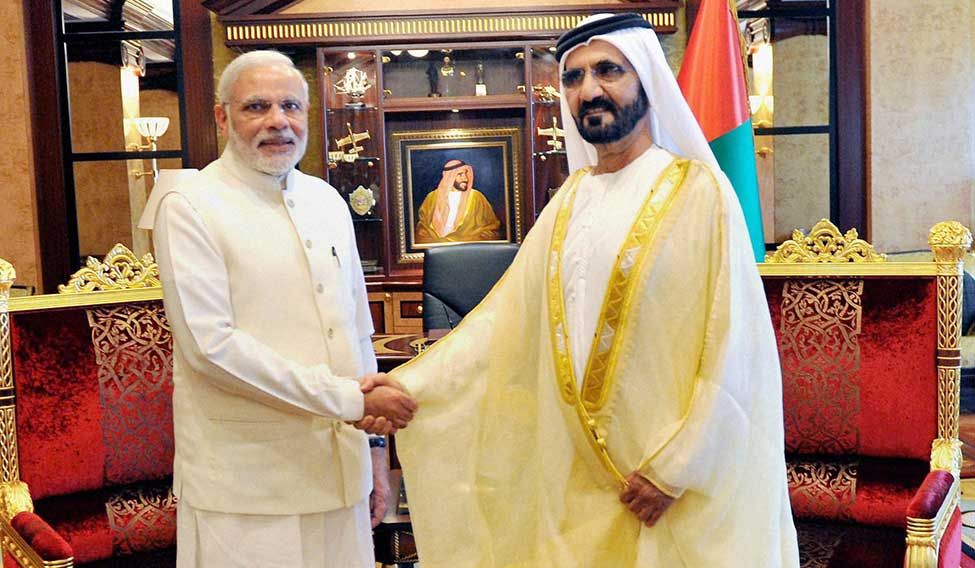INS Tir, INS Sujata and INS Tarangini are not among the most powerful vessels of the Indian Navy. Yet, they will be remembered for powering India's ties with the United Arab Emirates in the backdrop of instability and violence in west Asia. Last October, these three ships anchored in Port Rashid of Dubai for a joint exercise between Emirati and Indian naval cadets in the crowded Persian Gulf. Moreover, the joint statement issued during Prime Minister Narendra Modi's recent UAE trip shows that defence and security are going to be critical for India’s future ties with the UAE, along with energy and finance.
While the Indian Navy conducts such exercises in different locations, what drew attention to this exercise was that it coincided with the UAE’s belated attempts to acquire a strong and professional military force. The joint statement says that India and the UAE will intensify training and exercise at the levels of army, navy and air force.
The UAE, in recent months, has been uploading YouTube ads highlighting its expanding military and police forces. The UAE was the world's fifth largest importer of weapons for five years till 2013. According to Stockholm International Peace Research Institute, the UAE spent $14.4 billion on its defence preparation. However, it is yet to acquire a competent manpower. India moved in quick with military help, preventing it from reaching out to Pakistan, which has a history of providing professional and mercenary support to military powers in the Gulf region.
Dr James Onley of the University of Exeter, who has been studying the defence race in the Gulf Cooperation Council countries, says this is part of a regional readjustment, triggered by the rise of Iran. “The GCC countries are gradually acquiring more professional military forces that they previously did not possess. It is a big regional change and India is partnering this change,” he says.
In the scheme of security and anti-terror cooperation, Dubai last year extradited Faizan Ahmed, a native of Azamgarh district of Uttar Pradesh and suspected logistics man of Indian Mujahideen. Also, in recognition of the Indian community’s strength in the Emirates, Crown Prince Sheikh Mohammed bin Zayed Al Nahyan allotted land for a temple in Abu Dhabi, a first for the region.
Several regional players are going to watch this cooperation with curiosity as India-Israel ties are also expected to receive greater support under Modi, and President Pranab Mukherjee is expected to travel to Israel in mid-October. Interestingly, Modi met Iranian foreign minister Javad Zarif on August 14 before starting his trip to Dubai; Iran is a rival of the Arab GCC and Israel.
Though India could be criticised for military overreach to the UAE, former ambassador Talmiz Ahmad, however, says India’s military and strategic partnership with the UAE will include only training and security angles that are bilaterally important. “There are serious issues of security in the region and the UAE, as the leading nation of the GCC, has been a stabilising force in the region. It is, therefore, in our mutual long-term interest to support each other in critical areas,” he says.
Modi has begun treating the Indian success stories in the UAE at par with the success stories of the Indian diaspora of the west. This, experts say, will help the Indian government and the business lobby strengthen links between the residents and business groups in the UAE. Modi also extracted a promise of a $75 billion investment in India. Though the flow of money will take time, Modi's trip to the UAE has launched his much-anticipated west Asian tours.











